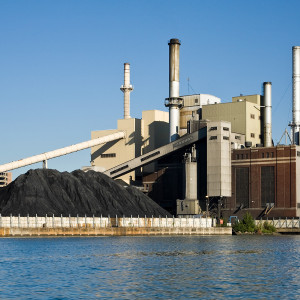Environmentalists in Virginia gained a Pyrrhic victory last week, when U.S. District Judge John Gibney ruled that Virginia Dominion Power, a local electric company, had violated the Clean Water Act, but would not be subject to fines. The case centered around coal ash, the waste product that remains after coal has been burned to fuel electric generators. The Sierra Club sued Dominion Virginia Power arguing that the company’s disposal methods had resulted in arsenic contamination of groundwater in violation of the Clean Water Act.
The case centered around the Chesapeake Energy Center, a coal-fired plant that was in operation for more than 50 years before closing in 2014. For a period of 30 years, ash from the plant was stored in settling ponds which lacked any sort of liner. The Sierra Club argued that this storage method allowed for groundwater contamination and that the ash should be removed for storage in a lined pit.
The Chesapeake Energy Center currently contains 3,396,000 tons of coal ash. Virginia Dominion Power testified that moving the ash would cost more than $600 million.
Gibney agreed with environmentalists that the coal ash from Virginia Dominion Power’s pits was the source of higher arsenic levels in the area. (Virginia Dominion Power had argued that sediments moved up and downriver with the tides, making it difficult to determine the original source of the arsenic.)
However, he took a more nuanced approach when discussing the impact of leaks from the site. Taking into account the overall volume of water in the area, any arsenic leakage would be “a drop in the bucket,” Gibney said.
“While the evidence shows that Dominion does discharge some arsenic into the surface waters surrounding the [Chesapeake Energy Center], it does not show how much,” wrote Gibney.
“What the Court does know, however, is that the discharge poses no threat to health or the environment,” he continued.
Instead, he ordered the company to conduct extensive monitoring of the site, including monitoring arsenic levels in fish and crabs from the area. In addition, Virginia Dominion Power must apply for a solid waste permit from the state.
Although the company had been pushing for no additional monitoring requirement, the decision is encouraging for supporters of coal-fired power plants, who have argued that coal ash is a common form of industrial waste. According to the EPA, nearly 130 million tons of coal ash was generated in 2014. It can be used as an additive in concrete, bricks, and other construction materials.
“Dominion is pleased that the court has confirmed there has been no threat to human health or the environment resulting from the coal ash stored at its Chesapeake Energy Center,” the company said in a statement. The company went on to say that it was pleased the court had deemed it “a good corporate citizen,” and was evaluating its options for systems to monitor the site.
The decision likely came as a relief for the company, though coal counts for a fraction of Virginia Dominion Power’s electricity generation. According to information released by the company, coal-fired plants were used for only 23 percent of Virginia Dominion Power’s electricity generation in 2015, the last year for which data is available. By contrast, nuclear generators provided 42 percent, and 34 percent of electricity generated came from either natural gas or renewable sources.
The Sierra Club has not yet released a statement on the case.
However, Paul Driessen, a senior policy analyst for the Committee For A Constructive Tomorrow, a group that looks to provide a libertarian perspective on environmental issues, says that the decision was a win for energy companies. Driessen has followed environmentalist lawsuits about contamination from coal ash first in North Carolina and now in Virginia.
“It seems that there is a new playbook [for environmentalists] focusing on chemicals released from coal ash,” he says. He points to recent changes by the EPA to the safe standards for various chemical compounds in groundwater. As technology has advanced to allow for ever more precise testing, the safety standards for chemicals like Chromium-6, arsenic, and other coal ash byproducts have dropped drastically, in some cases to less than one part per billion, while medical experts continue to debate if low levels of exposure have any impact on human health.
“This creates a gold mine for anti-energy activists,” Driessen says.

